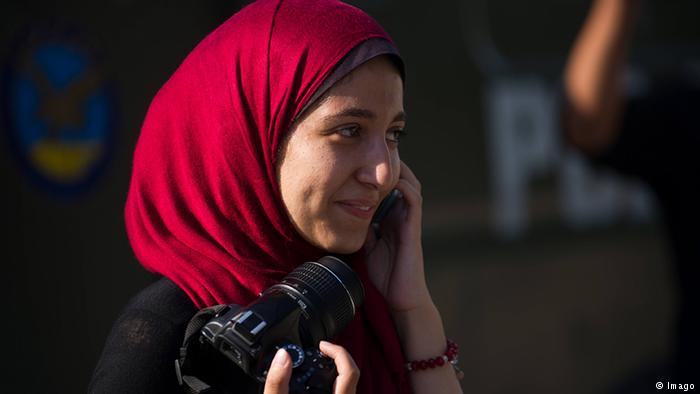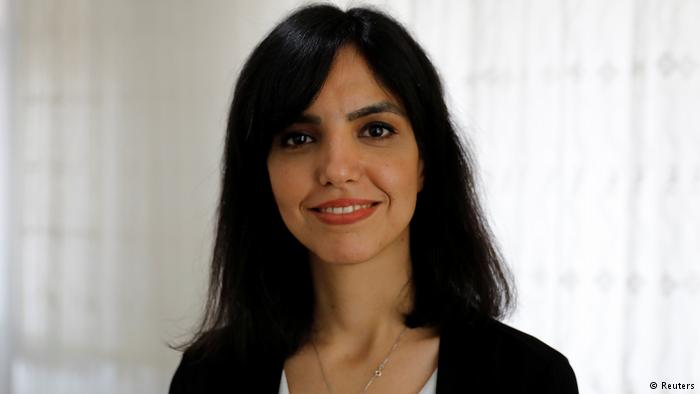Why do women hide their hair?

Muslims, Jews, Christians: Women all over the world cover their heads out of religious piety. An exhibition at Berlin’s Jewish Museum asks what motivates them – and how others respond.
Grace Kelly wore a scarf on her head as a fashionable accessory more than 60 years ago. Today, women of many different religious beliefs cover their hair. It’s a tradition that dates back to the days of antiquity. In many cultures, women’s hair is still considered too intimate to be displayed out in the open.
When societal ideals and religious strictures come together, it can often lead to conflict and strife. Consider, for example, the bathing guests on French beaches who feel provoked when a Muslim woman arrives wearing a burkini. How much religion can a secular society tolerate? That’s the subject of a new exhibition, “Cherchez la femme” running through July 2, 2017 at the Jewish Museum in Berlin. At its opening, DW spoke to curator Miriam Goldmann about why women hide their hair.
DW: “Cherchez la femme,” or “Look for the woman,” is the title of the exhibition. Do we really need to look for women?
Miriam Goldmann: In the course of the discussion surrounding the Muslim headscarf, it really does feel like that’s the case – it feels as though only men are offering their opinions on the subject. And religious requirements are most often written by men. With our exhibition, we want to give women the opportunity to speak for themselves. What do they think about head coverings, how do they themselves view them?
In your exhibits, there are women whose heads are covered who come from a variety of religions including Christianity, Judaism and Islam. Is there a connection between them?
Modesty is something that comes up in all religions. The idea behind it is that hair is something that can be seen as intimate and as such, should only be shown to a woman’s husband and her family. What surprised me, however, is that there is a lot of room for interpretation, which women make the most of. In spite of the rules, there is quite a bit of movement occurring, something which our exhibition presents. Among others, we show how Orthodox Jewish women have added a modern interpretation of the head covering rules through the use of wigs.
You want visitors to be confronted with the question of how much visible religiosity a secular society can handle. Is there an answer to that question?

Lots of talk about a lot of material: France’s burkini debate.
No, the exhibition is a playful commentary on the current societal debate, like the burkini ban in France. One of the friction points is the Christian understanding of religion, which says that religion is something private. In Judaism and Islam, that’s not the case: religious rituals and customs are lived out in the community and, as such, are visible.
Although a Muslim headscarf seems to be more provocative than one worn by a Jewish woman…
Yes, the Jewish head covering is something that elicits astonishment. Sometimes, women are devalued as quirky or weird, which can be hurtful. But with the Muslim head covering, so much more is read into it, such as, for example, that a woman has not integrated or has political motives. I believe that comes from the fact that Judaism has a long tradition of behaving as a minority group. There is a long history of experiences which have shown how to maintain core values and simultaneously be respectful of the laws of the nation.
What, in your opinion, is the impetus for the female head covering?
The subtext has to do with behavior between genders. It’s about power and sexuality, about how men view women’s hair, something which has long been considered fascinating and holding a magnetic, erotic energy.
Do you have a favorite exhibit?
Of course, but that’s something that continuously changes. At the moment, I’m quite pleased that we could display a so-called “spitzel,” a head scarf that is worn by Orthodox Jewish women. It appears seldom and gives the appearance on a woman’s forehead of an imitation of a hair extension. Outside of the religious context, it’s rare and is a real insider piece.
What would you like visitors to the “Cherchez la femme” exhibition to take with them?
A bit more understanding of others’ religiosity. I’m certain that our society can withstand more and I wish people would be more relaxed toward other reglions without immediately fearing the downfall of our society. At the end, we live in a globalized world in which not only goods cross borders, but also people with their customs.
Interview: Nadine Wojcik (ct)
_____
WTO RECOMMENDS
How religious women cover their heads
Christianity, Judaism, Islam: In all of these religions, women – some more, some less – cover their hair. What do these head coverings have in common? How do women view these religious strictures? (From April 4, 2017)
Judges, politics and the burkini
The burkini ban has caused quite a stir in France. Now the country’s highest administrative court has suspended the ban on burkinis for the time being. It is a good decision, writes DW’s Martin Muno. (From August 30, 2016)
A headscarf for all seasons
Colorful, patterned or plain – at wedding ceremonies or during funerals – African women always have the right headscarf for every occasion. For many, it is an indispensable part of their outfit. (From February 15, 2016)






